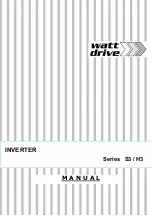from the sum of the left and right input signals. However this sum contains not only the
original center channel information, but the left and right stereo material as well.
Reproducing the sum through the center loudspeaker must inevitably cause instruments
located to the left and the right of the stereo image to move toward the center. The result
is a loss both of spatial information and of the attractiveness of the mix. It is a goal of our
matrix system to minimize this reduction in the width of the front image.
The goal of maintaining balance is also very important. It is not always possible to
reproduce the original localization of a sound. However it is possible to preserve the
loudness relationships between different sounds, and this must be done if the matrix
system is to be compatible with two-channel stereo. We will explore these issues in detail
in this paper.
The second requirement – that the reverberant component of the input signals should be
reproduced with maximum spatial diffusion – can be achieved by rigorously maximizing
the lateral decorrelation of the various outputs. This maximum lateral separation has been
a design requirement of the Logic7 system from the beginning. The mathematics to
achieve it has been steadily improving. This issue will also be explored in detail.
Matrix decoders in equations and graphics
In an AES paper in October of 1996 we presented the design of a matrix decoder that can
be described by the elements of a two by n matrix, where n is the number of output
channels. Each output can be seen as a linear combination of the two inputs, where the
coefficients of the linear combination are given by the elements in the matrix. In this
paper the elements are identified by a simple combination of letters. The previous paper
described a five-channel and a seven-channel decoder. This paper will describe a five-
channel decoder only.
It is obvious from symmetry that we need to describe the behavior of only six elements –
the center elements, the two left front elements, and the two left side elements. The right
elements can found from the left by simply switching the identity of left and right.
CL:
The matrix element for the Left input channel to the Center output
CR:
The matrix element for the Right input channel to the Center output
LFL:
The Left input channel to the Left Front output
LFR: The Right input channel to the Left Front output
LRL: The Left input channel to the Left Side output
LRR: The Right input channel to the Left Side output
These elements are not constant. Their value varies as a two dimensional function of the
apparent direction of the input sounds. All phase/amplitude decoders determine the
apparent direction of the input by comparing the ratio of the amplitudes of the input
signals. For example, the degree of steering in the right/left direction is determined from
the ratio of the left input channel amplitude to the right input channel amplitude. In a
similar way, the degree of steering in the front/back direction is determined from the ratio

















